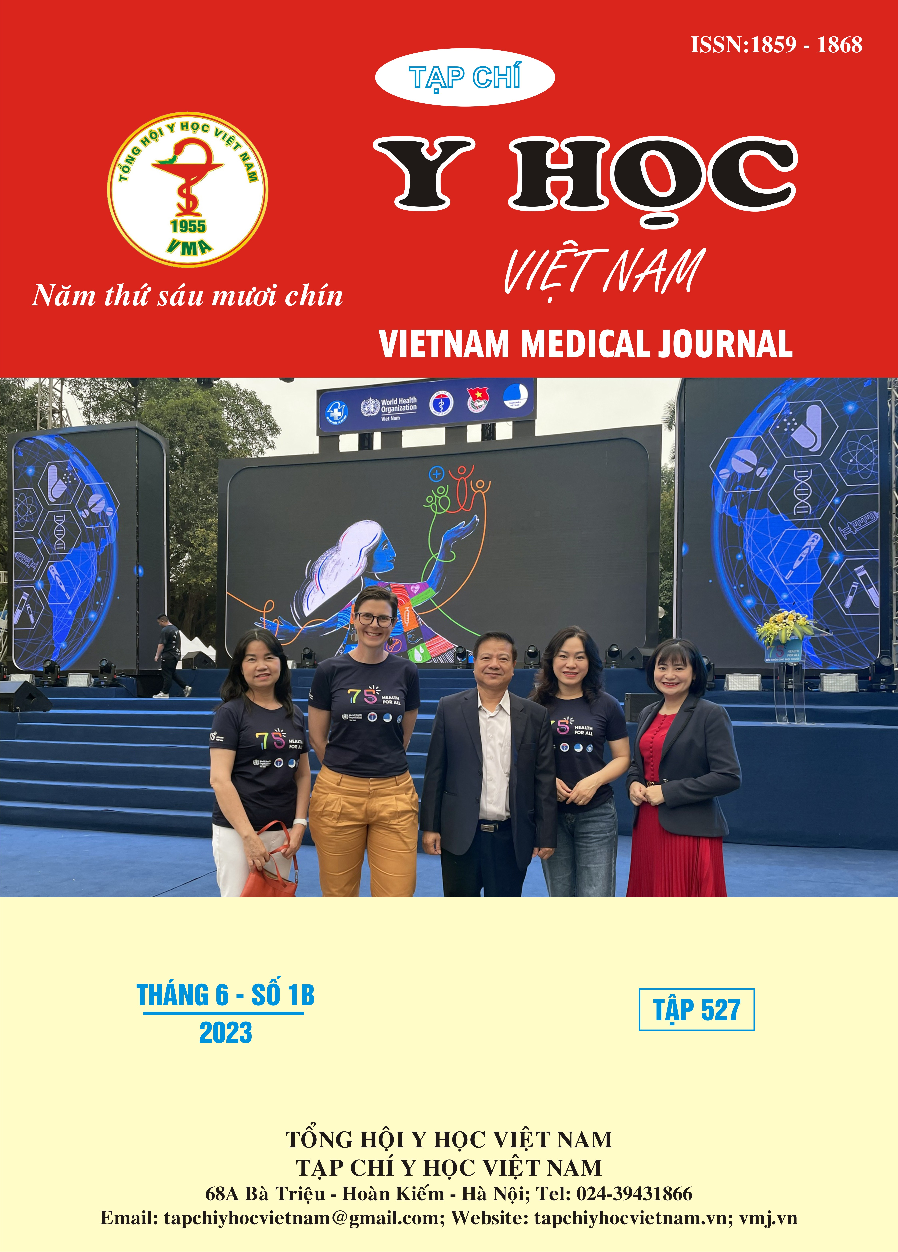LONG-TERM OUTCOME OF LAPAROSCOPIC ESOPHAGECTOMY WITH THREE-FIELD LYMPH NODE DISSECTION FOR ESOPHAGEAL CANCER AT CHO RAY HOSPITAL
Main Article Content
Abstract
Background: Esophageal squamous cell carcinoma is one of worst prognosis cancer due to extensive lymph node metastasis and local invasiveness. Our objective in this study is to evaluate surgical outcome of three-field lymph node dissection in terms of morbidity, mortality, survival and recurrent rate. Materials and Methods: Between November 2015 to December 31, 2022, a total of 114 patients had undergone esophagectomy with three-field lymph node dissection at the department of digestive surgery, Cho Ray hospital, Vietnam. All of the patients had primary squamous cell carcinoma of thoracic esophagus. This is prospective descriptive study. Results: The mortality rate after laparoscopic esophagectomy with 3-Field lymph node dissection was 0.88%. The overall complication rate was 50.9%. Recurrent laryngeal nerve paresis is the most common complication, accounting for 21.9%, anastomosis and pneumonia respectively 11.4% and 10.5%, lymphatic leakage accounted for 2.6%. The rate of lymph node metastasis after esophagectomy with 3-field lymph node dissection was 49.1%. in which cervical lymph node metastasis of middle and lower thoracic esophageal cancer 19,2%, 6,9%, respectively. The rate of cervical lymph node metastasis with tumor invasion is pT1 of 13%, pT3 of 23.5%, pT4 of 16,7%. Overall survival after 1 year is 86%, after 3 years is 63%. The rate of patients with disease-free survival after 1 year is 80%, 3 years 49%, after 5 years is 41%. Median disease-free survival was 3 years. Conclusion: The high rate of metastases to the cervical lymph node suggests the need for laparoscopic esophagectomy with 3-Field lymphadenectomy for squamous cell carcinoma. However, it is necessary to balance the benefits and risks when applying this technical process.
Article Details
Keywords
Esophageal cancer, Transthoracic esophagectomy, Three-Field lymph node dissection
References
2. Hata, T.M. and J. Moyers, Preoperative patient assessment and management. Clinical anesthesia, 2009. 581.
3. Yajima, S., Y. Oshima, and H. Shimada, Neck dissection for thoracic esophageal squamous cell carcinoma. International Journal of Surgical Oncology, 2012. 2012.
4. Lee, D.H., et al., Outcomes of cervical lymph node recurrence in patients with esophageal squamous cell carcinoma after esophagectomy with 2-field lymph node dissection. The Journal of Thoracic and Cardiovascular Surgery, 2013. 146(2): p. 365-371.
5. Ozawa, S., et al., Postoperative complications of minimally invasive esophagectomy for esophageal cancer. Annals of Gastroenterological Surgery, 2020. 4(2): p. 126-134.
6. Trần Phùng Dũng Tiến, Phẫu thuật nội soi ngực bụng điều trị ung thư thực quản 1/3 giữa và dưới. 2011
7. Wang, J., et al., Three-field versus two-field lymphadenectomy for esophageal squamous cell carcinoma: a meta-analysis. Journal of Surgical Research, 2020. 255: p. 195-204.
8. Kudou, K., et al., Clinical outcomes of surgical resection for recurrent lesion after curative esophagectomy for esophageal squamous cell carcinoma: a nationwide, large-scale retrospective study. Esophagus, 2022. 19(1): p. 57-68.


